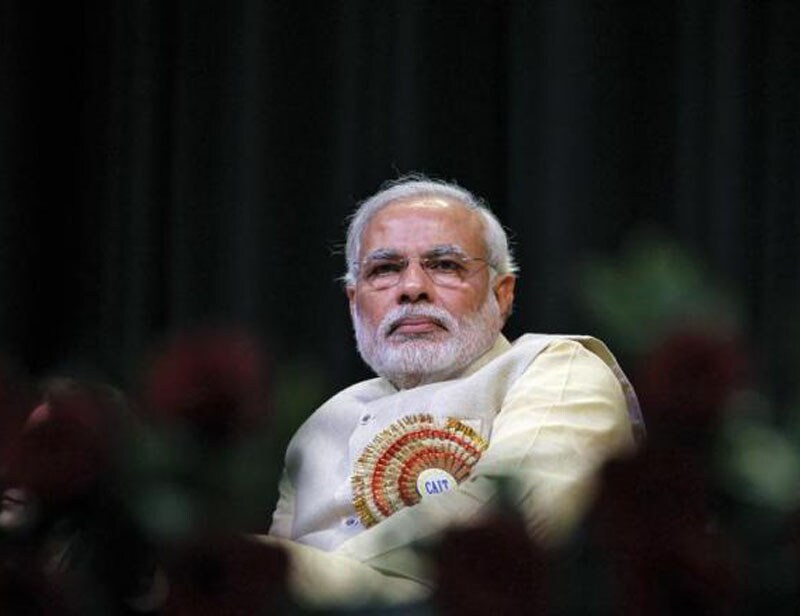-

With PM Narendra Modi at the helm, Indian economy has been bufetted by both global and domestic factors, but it has still managed to come out as the fastest-growing large economy in the world. This is notwithstanding a sharp cut in the government's economic growth forecast at the fag end, despite setbacks such as 12 months of negative export growth, another bad monsoon and roadblocks to the far-reaching goods and services tax (GST) regime. Here is all you wanted to know in numbers about the climb to the top by the Indian economy in 10 points:
-
2. Narendra Modi: India is the only economy which has not been affected by the global economic crisis that has hit the world. Everyone is saying this… the World Bank, the IMF… The world is going through an economic crisis, but it is India alone that is progressing at a rapid pace. This is a unique situation when the whole world is slipping and India is growing. (Reuters)
-
2. Indian economy in 2015: The Indian economy saw some positives. Global crude oil prices fell to the lowest levels in over a decade, checking the balance of payments from going awry, inflation rate remained more-or-less under control, despite spikes in food prices, and economic reforms got a big push, notably in the form of further opening up of a host of industries to foreign equity. (Reuters photo)
-
Budget 2016: Although India is growing in real terms by over 7 per cent – having overtaken China to become the world’s most dynamic economy – it is creating too few jobs for a workforce growing by a million people every month. While most economists expect Arun Jaitley to stay, those ready to countenance the idea he might be replaced would prefer a technocrat to fill the role. They outnumbered those backing a professional politician by about two to one. (Reuters)
-
4. Indian economy in 2015: India's external position has improved. Forex reserves are a little above $350 billion in November 2015 as compared to a little over $270 billion in July 2013. Net foreign direct investment (FDI) inflows have increased to $17 billion in the first half of 2015-16 in comparison to $15.8 in the same period last year. The second quarter's current account deficit (CAD) was logged at a level of 1.6 percent of GDP. (Reuters photo)
-
5. Indian economy in 2015: However, the global slowdown continued to weigh on exports, which have declined for 12 straight months. The government said this was also pulling down growth but felt the situation would improve in the coming months. (AP photo)
-
6. Indian economy in 2015: The Indian rupee shed a large amount of its value, and the finance ministry's mid-term economic review attributed it to the major devaluation of the Chinese yuan. (Reuters photo)
-
7. Indian economy in 2015: The changes overall, however, led many global institutions like the World Bank, International Monetary Fund, Asian Development Bank and some UN institutions to upgrade India's growth forecast to some 7.5-8 percent, calling it the fastest expanding globally, surpassing China. (Reuters photo)
-
8. Indian economy in 2015: However, The mid year review released this month lowered the economic growth forecast for the current fiscal to the 7-7.5 percent range, from the previously projected 8.1-8.5 percent, mainly because of lower agricultural output due to deficit rainfall. It also said there may be a need to reconsider next year's fiscal deficit target of 3.5 percent. (PTI photo)
-
9. Indian economy in 2015: India's eight core industries, representing major infrastructure sectors, grew at 2.3 percent in the April-September period of the current fiscal, compared to a rate of 5.3 percent in the same period of the previous fiscal – the fall in growth rate caused by lower expansion in electricity, coal and cement sectors and negative growth in steel and natural gas sectors. (PTI photo)
-
10. Indian economy in 2015: RBI Governor Raghuram Rajan cut the interest rate in January for the first time in nearly two years and followed up with two other reductions to bring down the central bank lending rate to 6.75 percent. (Reuters photo)
-
Arun Kumar, till recently a professor at Jawaharlal Nehru University here, said that in view of negligible industrial growth, drought-like conditions in past years and no substantial increase in profits and wages, the new numbers fall flat from the point of credibility. "Even input costs, that are now low with falling oil prices, were not low in the period 2011-12. Let the statistics office show the growth figures for up to 10 years prior to the base year for us to consider the new series seriously," Kumar said. "GDP growth has been powered only by private consumption and public investment is a concern. The proposed wage hike for government workers may impact plan for next fiscal." The economy continues to send "mixed signals" over growth, while all economic indicators were not yet aligned in pointing to a higher trajectory of growth, it said. <br><br>HIGHLIGHTS: * India emerges as fastest-growing large economy; * Real GDP in first half of fiscal grew at 7.2 percent; * Forex reserves of over $352 billion as on the first week of December; * FDI inflows increased to $17 billion in the first half of 2015-16; * Indian basket of crude oils fell below $40 a barrel; * Foreign investment limits raised in defence, real estate and insurance, foreign equity in railways; * Retail and wholesale inflation rates rose in November to 5.41 percent and (-)1.9 percent respectively, largely due to an increase in food prices; * Infrastructure sectors grew at 2.3 percent in the first half of fiscal; * Government lowers GDP growth estimate for fiscal by one percent to 7-7.5 percent. (Reuters photo)